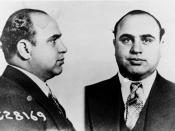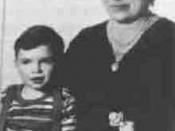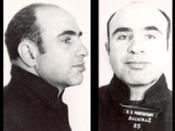With the adoption of the Eighteenth Amendment to the U.S. Constitution - making the manufacture, sale, or transportation of liquor a federal crime - countless men and women were out of jobs; as bars, taverns, and liquor manufacturing factories were shut down. Many citizens also anticipated that they would no longer be able to go out on the town and enjoy a drink with their friends, socialize at a local tavern, or relax in the comfort of their own homes with a glass of beer. Life for urban civilians - mainly in major cities along the eastern seaboard, where companionship and alcohol seemed to go hand in hand- appeared to be going completely downhill. In response, a group of great men would put forth a miraculous effort to bring enjoyment back into the lives of all of those who thought that the new Amendment would put a damper on their merriment, as well as earn a small fortune for them.
These men, who included the likes of Alphonse "Scarface" Capone, Dion O'Banion, and Johnny Torrio, were members of various organized crime groups, who rebelled against the government by bootlegging alcohol to sell to the public. Though organized crime, primarily the Italian Mafia, also known as La Cosa Nostra, ("This thing of ours" when translated into English) has been in existence since the late 19th century, it would have never escalated to the degree that it did during the Prohibition Era in Chicago without the influence of intimidation from gang members against common civilians, as well as onto other inferior gangs, the corruption of politicians and police forces by powerful men of the mob, and the greed for money and power that nearly all men in the mafia contributed to as they used violent acts, and even killed other men...



Good information
Thanks for your information this will help with my essay.
1 out of 1 people found this comment useful.